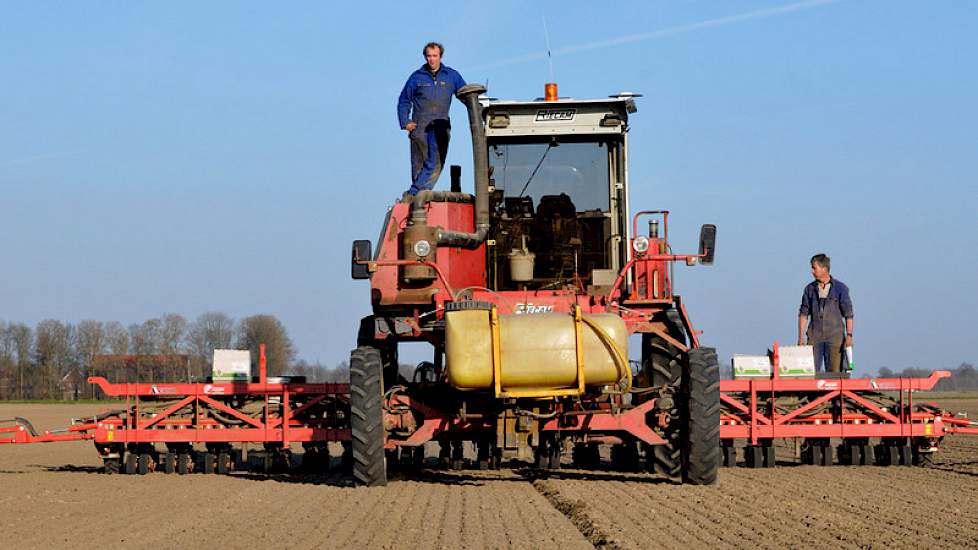With reduced soil cultivation on clay, the trick is to save the deeper layers and to grind the top layer. Grower Jacob Vos from Bant, Flevoland, works in this way and supervises research into shallow tillage from practice.

For growers who want a finer seedbed, but want to maintain the structure deeper in the soil, shallow tilling is a workable technique. According to researcher Derk van Balen of WUR Open Crops, this also includes shallow turning tillage (eco-plowing) and the threshold to this reduced tillage is smaller.
It is worth looking at this step between non-turning and plowing. You can do such a shallow turning operation annually or occasionally. In our research in Lelystad, we see that you can use this to lower the weed pressure compared to non-inversion tillage and still largely maintain the soil structure. ‘
Better water management
Jacob Vos has been a sounding board group member for research in Lelystad since 2009. He farms with his two sons in Bant and Tollebeek and they do contract work. Vos is particularly pleased with the much better water management in wet and dry periods.
“You can do something with modern technology and the best tire technology“
The grower has noticed that the bearing capacity of shallow tilled soil is much better than with deeper plowing. When harvesting sugar beets in Tollebeek, late in a wet autumn, it seemed unwise to bring tippers onto the land. ‘It then turned out that this was possible on our land tilled with the eco-plow, but not with a customer of our contracting company who had simply plowed,’ he says.
Light tractor
‘The reduced tillage can be done with a light tractor. You have more capacity and save fuel. When I came to the polder as a boy with my father, we worked the soil with light machines. You could prepare potato land with a harrow. Machines have become increasingly heavy. ‘
Vos believes in larger machines, provided the pressure on the ground remains low. ‘We were among the first to work with a four-row harvester with low ground pressure. If too much pressure from machines closes the ground, you cannot solve this properly mechanically. Rather, recovery must come from roots and worms. With the paragrubber you can tear the ground, but not too coarsely. You can do something with modern technology and the best tire technology.
Soil soggy
‘Many people are afraid of flooding if they don’t plow, but plowing and tossing turns the pores in the soil upside down. This makes the ground soggy. It is better to keep everything intact, ‘says the grower.
Shallow working, tramlines and no further compaction is now his approach. That is why he sows the onions, for example, with a 9 meter wide seeder, equal to three bed widths, because then he does not drive over the middle of a bed.
Can be seen clearly in the rows
Arable farmer Jacob Vos from Bant does a lot of spraying on his farm. During that work he pays close attention to the crop. Those observations lead to new insights. He noticed that there was a color difference in the potatoes, depending on the difference in weight or wheel pressure of machines.
‘The crop was best between the first and second row and between the seventh and eighth row. I then started looking for what was different there. ‘ With earthwork and cultivation, tires had been running all over the field except between those rows. ‘With onions, even the small wheels of the sowing machine turned out to be slightly compacted.’ Vos concluded that it was good to leave the ground alone as much as possible and to opt for a tramline system.


